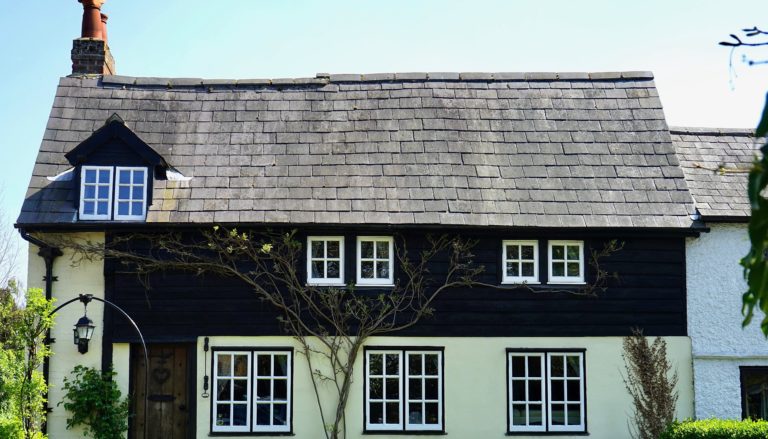The Importance of Cover Boards in Roofing Assemblies

By Derrick Hutchingson, USG Roofing Solutions.
When designing a roofing assembly, many factors need to be taken into consideration.
Performance attributes, product quality, aesthetics, price and quantity must be carefully examined. One key product often overlooked during this process is a cover board.
Using cover boards is an integral part of creating a roofing assembly. A cover board is a thin substrate to which a roof membrane is adhered. However, the use of a cover board far exceeds that of a substrate — it also serves as a critical component that helps to extend the life of a roof. Without a cover board, the roof is missing added durability; the building is more susceptible to hail, fire and wind damage.
Hail is damaging to insulation, but by using a cover board, the impact is minimized. Insulation damage results in a reduction of the roof’s thermal resistance, or R-value. R-value is the measure of heat flow through a material. The higher the R-value, the greater the resistance of heat flow through it. Hail damage on a roof without a cover board can easily pierce the insulation, which will increase the heat flow through it, thereby increasing the energy cost of the building.
Cover boards also serve as a fire barrier protecting the roof from external fire. Insulation is very flammable and cover boards offer a layer of protection that prevents the insulation from igniting in the event of a fire. This in turn makes buildings safer as fires are less likely to spread from one building to the next.
Additionally, cover boards help to increase the wind uplift value of a roof assembly by providing a strong, high performing layer of protection. However, strict adherence to the recommended fastener spacing is key to wind uplift performance. This prevents potential damage that may occur during unfavorable weather. According to Factory Mutual, a global property insurance company, wind-uplift results show that including a cover board is extremely beneficial to the building. They can double the wind uplift of certain assemblies or achieve the same rating with fewer fasteners.
The National Roofing Contractors Association (NRCA) has endorsed the use of cover boards in all low slope roofs due to the insulation’s negative attributes like facer delamination, powdering, shrinkage, cupping and edge cavitation. Cover boards help to support the insulation in the event of these failures. All of these uses of cover boards provide added security and lower cost of ownership for the building.
Just as cover boards are used to protect against various potential threats, they come in a variety of compositions tailored to an array of applications. With so many options for cover boards, selecting the appropriate product may be challenging at first. By keeping in mind the desired result, the process becomes easier.
Different cover boards have different physical properties.
There are many types of cover boards that are suitable for an assortment of applications. Each has features and benefits suitable for a desired result. The most common are:
Gypsum Fiber: A fiber-reinforced, uniform composition cover board that can be used in most roof applications. Gypsum-fiber cover boards typically provide unmatched wind uplift and hail performance, higher than any other cover board, with no risk of facer delamination. This product also protects against moisture and mold.
Gypsum: A gypsum core and a glass-mat facer provide protection from moisture and mold. This product is usually available with a coated or uncoated glass facer. The coated facer allows for adhesion of the membrane, while an uncoated facer is generally used for a mechanically attached single-ply application that doesn’t require adherence to the membrane.
Cement: Typically cementitious-based with a reinforcement mesh for added strength, these products are characteristically water durable and will not rot, warp, delaminate or disintegrate. They may also be noncombustible, providing a great fire barrier for any roof assembly or parapet wall.
Wood Fiber: Generally made from wood fiber and bonded together with a resin. These cover boards are usually used in hot mop and torched applications.
High-Density Insulation: Fairly new to the market. These boards are usually composed of a compressed polyisocyanurate core with a coated glass-mat facer, making it a lightweight product.
Perlite: Consist of expanded perlite, cellulose binder and mineral aggregate. This cover board is typically used in hot mop and torched applications.
Asphaltic: Made of a mineral fortified, asphalt-based core with fiberglass facers. These boards are generally used in an asphaltic roof system.
Mineral Fiber Board: Consist of rock wool or mineral fiber. These boards provide good sound properties and are typically used in asphaltic roof systems.
Most of the aforementioned boards can also be used as a thermal barrier that is placed directly over the roof deck. In this application, the cover board provides a fire barrier in the case of an internal fire. This significantly increases the time required to melt the insulation, which adds fuel to the flames. The cover board also serves as a substrate for a vapor retarder in this application.
Cover boards are ideal because most will provide excellent fire properties and the necessary strength to allow the roof to withstand hail impact, windstorms and foot traffic. It is essential to understand which cover board is the best match for each individual application.
Determining which cover board is right for the job.
Characteristically, the membrane materials and necessary roof functions determine which type of cover board should be used. For example, if a building is on the Florida coast and a 300 psf rating with a single-ply membrane is needed, a gypsum fiber cover board may be the best option due to its high strength, wind-uplift performance and durability.
When selecting a cover board, it is important to keep in mind which properties are most crucial for the job and the type of roof system desired. Knowing the properties of each cover board helps when selecting the one that will provide the best value for the building. Some building codes may also dictate the necessary fire and wind-uplift properties the roof should achieve. Including a cover board may help achieve these approvals.
After selecting the proper cover board, correct installation is essential to ensure the cover board will perform as expected.
Installing cover boards
Cover boards are installed directly under the membrane and above the insulation. Many are fastened directly down into the deck, or they can be adhered to insulation with low-rise foam adhesive or hot asphalt.
To ensure cover boards are installed correctly:
1. Stagger the cover board and insulation joints.
2. Install using approved fasteners with plates or adhesive and follow manufacturers’ directions for fastener spacing.
3. Only install what can be covered by a final membrane system within the same day.
Selecting and installing the appropriate type of cover board can lead to energy efficiency and other benefits for the building. This in turn creates a higher performing building which is beneficial to the building owner and all occupants of the space.
Cover boards continue to impact the lif cycle of a building
Cover boards were first used as a barrier board for hot-applied and solvent-based adhesive to prevent damage to the insulation and blisters in the membrane system. These original cover boards were weak and low performing as their only job was to serve as a barrier board. Over the years, the industry has collected more detailed information about roofs and how storms and normal roof maintenance can damage a roof. As a result, additional properties have been added to cover boards making them stronger and thereby increasing the life span of a roof. Additionally, building codes have played a role in the development of cover boards. The need for higher fire and wind-uplift performance has driven innovation resulting in higher performing cover boards.
It is expected that cover boards will continue adding value to the roofing system and the building owner. Even though using a cover board is an additional step, it has enabled contractors to create a long lasting, more durable roof. The desire for buildings that are energy efficient, high performing and sustainable continues to drive development of products that achieve these ratings as well.
As cover boards are becoming more the norm in roofing systems, there is an ongoing challenge to identify what else they can do. How can cover board functions increase? Can they help make the roofers work more efficiently? Can cover boards provide more value to the building owner, and if so, what is it? These questions will drive innovation and product development in the years to come.
Learn more about roof cover boards and USG Roofing Solutions.




















Comments
Leave a Reply
Have an account? Login to leave a comment!
Sign In